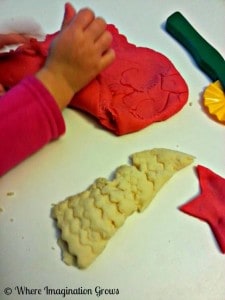Delayed Opening – Thursday 1/18/18
This is an important message regarding operations for Apple Tree Learning Centers for Thursday January 18th.
All Apple Tree Centers will operate on a 3 hour delay. We will open at 9am due to the freezing temperature and road conditions. Due to the delayed opening time we will only be serving lunch at 12pm and afternoon snack at 3pm tomorrow.
Academy classes K through 5th grade will be on a delay with a start time of 9:30am.
Child care is available for all public school students for an additional fee.
Sidewalks and parking lots have been salted; however, they are still icy and slippery from the below freezing temperatures. Please be careful and hold your child’s hand when walking in these areas to prevent falling.
We appreciate all your support and please be safe.
Sincerely,
Heidi Riden
CEO
A New Year. A Not So New You…and that’s the beauty of Life!
Another calendar has flipped to the final page, welcoming a new year and a trip to the stationary store to get a 2018 calendar.
For most of us the a new year can bring on some anxious thoughts as we prepare to “do it right” this time. We make resolutions (that sound awfully familiar), clean out our closets (even after we purged for end of year giving), start a diet (back to those pesky resolutions), and the list can begin to get out of control! There is absolutely nothing wrong with any of this, however, it might be time to give yourself a break. take a minute to think about your life, and move forward into the new year with the same old awesome you!
Take some time to write down – or enter into a computer – a “bucket list” of things that you “want” to do in 2018. Once this list is compiled, create another list of tasks that you “must” do in 2018. Lastly, create another list of commitments that you are routinely doing that could be moved to a list titled: “Not Needed In My Life for 2018”.
Once you have these things written down – your “life as it is today” will become more clear and your ability to soar in 2018 will be natural and successful.
Handwashing: A Powerful Antidote To Illness
 How many times have you and your child washed your hands today?
How many times have you and your child washed your hands today?
You might not have given it much thought. It’s either part of your routine, done frequently without thinking, or maybe you don’t do it much at all. But as your pediatrician may have told you, hand washing may be the single most important act you and your child have for disease prevention.
Making It Habit
As early as possible, get your child into the habit of washing her hands often and thoroughly. All day long, your child is exposed to bacteria and viruses—when touching a playmate, sharing toys, or petting the cat. Once her hands pick up these germs, she can quickly infect herself by:
- Rubbing her eyes
- Touching her nose
- Placing her fingers in her mouth.
The whole process can happen in seconds, and cause an infection that can last for days, weeks, or even longer.
When To Wash
Hand washing can stop the spread of infection. The key is to encourage your child to wash her hands throughout the day. For example, help her or remind her to wash her hands:
- Before eating (including snacks)
- After a trip to the bathroom
- Whenever she comes in from playing outdoors
- After touching an animal like a family pet
- After sneezing or coughing if she covers her mouth
- When someone in the household is ill
Studies on hand washing in public restrooms show that most people don’t have very good hygiene habits. “Hand washing” may mean just a quick splash of water and perhaps a squirt of soap, but not nearly enough to get their hands clean.
Steps to Proper Hand Washing
So what does a thorough hand washing involve? The Centers for Disease Control and Prevention (CDC) recommends the following steps:
- Wet your child’s hands.
- Apply clean bar soap or liquid soap to the hands, and then place the bar on a rack where it can drain before the next hand washing.
- Rub the hands vigorously together. Scrub every surface completely.
- Keep rubbing and scrubbing for 10 to 15 seconds to effectively remove the germs.
- Rinse the hands completely, then dry them.
How Long to Wash
Keep in mind that although 10 to 15 seconds of hand washing sounds like an instant, it is much longer than you think. Time yourself the next time you wash your hands. Watch your child while she’s washing her hands to make sure she’s developing good hygiene behaviors. Pick a song that lasts for 15 seconds and sing it while you wash. Encourage your child to wash her hands not only at home, but also at school, at friends’ homes, and everywhere else. It’s an important habit for her to get into, and hopefully one that’s hard to break!
Article Source(s):
Immunizations & Infectious Diseases: An Informed Parent’s Guide (Copyright © 2006 American Academy of Pediatrics)
https://www.healthychildren.org/English/health-issues/conditions/prevention/Pages/Hand-Washing-A-Powerful-Antidote-to-Illness.aspx
The information contained on this Web site should not be used as a substitute for the medical care and advice of your pediatrician. There may be variations in treatment that your pediatrician may recommend based on individual facts and circumstances.
Let’s Be Friends!
Making friends is an important part of your child’s development at preschool, and friendships often develop as children play and learn together. With a few tips, your guidance as a parent can help your preschooler to adapt to this new social environment and learn to play well and be a good friend in the classroom and at play.
Some children seem to make friends easily. They might be able to name their friends. They might look for their friends when they arrive at preschool or playgroup, or ask you about having playdates with their friends.
Some children might not have friends they can name, but they might be keen on making friends. And others might be slower to warm up and need time to watch what happens before joining in.
Friendships help children feel like they belong, which is good for children. Knowing how your child responds to other children gives you a good basis for helping him make friends and friendships in a way that suits his personality and temperament.
Preschoolers develop friendships during play. And as your child plays, she builds skills that help her with friendships now and in the future. These are skills like sharing, taking turns, cooperating, listening to others, managing disagreement, and negotiating different views and ways of thinking about things.
It might help to remember that many of these skills are hard even for adults. Your child is still learning and she needs lots of opportunities to practice being a good friend.
Providing time for children to play with other children from preschool or playgroup can help them develop friendships. Here are some ways that you can prepare your child from the homefront:
- Talk with your child about who he plays with, why he likes playing with them and what they like to play. If you know who your child likes to play with, you can talk to other parents about playdates.
- Make a time for children to meet and play. You could invite other children and parents to your home, or arrange to meet at a local park.
- Stay close. It can be reassuring for your child to have you nearby, particularly if the children don’t know each other well. As your child gets more confident you can be further away, although it’s still important to be aware of what’s going on.
- Keep an eye on what’s going on. This will help you know whether children are just enjoying some rough-and-tumble play, or whether the play is getting out of hand. If things are getting too rough, you’ll need to step in.
- Set a time limit for the playdate. When children get tired, they often find it harder to cooperate. It’s good to finish play time with everyone wanting to do it again.
Source: http://raisingchildren.net.au/articles/preschool_friends.html/context/557
Our 2017-2018 School Supply List
Be sure to head out this weekend and save money on your school supplies. Download the 2017-2018 School Supply List!
Keep The Learning Going This Summer
How many times have you heard “Mom, I’m bored…” this summer? It seems that the anticipation of summer break is oftentimes the best of times, and once the kids are at home without their friends – the boredom sets in. Here are some smart strategies from the staff at Greatschools.com to keep the learning going this summer:
Summer vacation can be either a learning wasteland or a learning paradise. The temptations are great for children to spend hours watching television or playing video games, but with a little ingenuity and planning, the summer can be transformed into a time to stretch the mind, explore new hobbies, learn about responsibility and build on skills learned during the school year.
Keep the Learning Going
Teachers spend an average of four to eight weeks every fall reviewing and reteaching material that students have forgotten during the long summer break. Many students lose the equivalent of one to two months of reading and math skills during the summer and do not score as well on standardized tests as students who continue to learn during the summer. The effect is cumulative: Each summer a student isn’t learning adds up and can have a long-term impact on overall performance in school.That doesn’t mean that children should be doing math worksheets and studying vocabulary lists to preserve the skills they have learned during the school year. Summer is the perfect time for children to discover that learning is fun and can happen anywhere. “You don’t want your kids to think that learning is only something that happens in places called schools,” says Susan K. Perry, author of Playing Smart: The Family Guide to Enriching Offbeat Learning Activities for Ages 4-14. “Rather, you want them to grasp that learning is fun and can go on all the time, anytime, anywhere, with handy materials, not only based on the instruction of an actual schoolteacher. The summer is a great unstructured mass of time to try out new things and explore interests that don’t necessarily fit into the school curriculum.”
Learning can take place whether you are taking a trip to a far-off place or spending the summer in your own neighborhood. But be careful not to over-plan. “To avoid boredom, a child has to learn to be motivated on his or her own, to a certain extent, and that is an acquired skill,” says Perry. “If every time your child says, ‘I’m bored,’ you step in with a quick solution, they’ll never learn to develop their own resources. But do provide some options. Just don’t try to instill learning. That’s not how it works.”
10 Fun Summer Learning Activities
Here are some activities to get your child started on a summer of learning fun:Grow the biggest zucchini in your neighborhood
What better way to learn the basics of science and how things grow than to plant your own garden? You can start with seeds or small plants. Talk about what plants need to be hardy: air, water, sunlight and nutrients. Vegetables are especially fun and educational to plant because your child will learn where food comes from and will also get to eat the end product.Clip, paste and write about your family adventures
A family vacation is a perfect opportunity to create a trip scrapbook that will be a lasting souvenir of family adventures. Collect postcards, brochures and menus from restaurants and tourist attractions. Encourage your child to write descriptions of the places you visited and tell stories about your family’s escapades. Or suggest a scrapbook on your child’s favorite sports team or a chronicle of his year in school. The scrapbook might contain photos with captions, newspaper clippings or school mementos.Many photo-sharing Web sites, such as Shutterfly or KodakGallery, will help you (for a fee) create professional quality photo books, where you arrange the photos and write captions.
Get theatrical
Young children can make their own puppet theater. Begin by cutting off the finger-ends of old gloves. Draw faces on these fingers with felt tip markers and glue on yarn for hair. Or glue on felt strips to create cat, dog or other animal faces. Then your child can create a story that the finger puppets can act out. For older children, find books containing play scripts for young people (see “Helpful Books” sidebar)and encourage your child and friends to create their own neighborhood theater. They can plan a performance, make a simple stage at the park or on the steps of someone’s home, create playbills and sell tickets.Make chocolate mousse or build a bird feeder
Toy stores and craft shops are full of kits for making things, from bird feeders to model airplanes to mosaic tableaux. These projects teach children to read and follow directions, and offer the added benefit of creating a finished product. Science experiment books encourage children to observe and ask questions while providing hours of hands-on fun using scientific concepts.What child wouldn’t be inspired to bake cookies or make chocolate mousse? A cookbook geared for children is a good place to start. Ethnic cookbooks provide an excellent way to explore the food of other cultures, and open up conversations about how people do things differently in other parts of the world. Children are much more likely to eat something strange if they make it themselves.
Paint the picket fence, baby-sit or volunteer at a soup kitchen
Even young children can learn to be responsible by helping to set the table, take care of a pet, clean out a closet, wash the car or paint the picket fence. Ask your child to be your energy consultant and help find ways to conserve energy in your house. Outside summer jobs and community service help children learn to be punctual, follow directions and serve others.Become the family’s junior travel agent
Half the fun of a trip starts before you get there. Involve your child in the planning by practicing how to use a map to find cities and tourist attractions, and how to estimate distances. If you are driving, work with your child to figure out how many gallons of gas it will take to get there and estimate the cost. If you are flying or traveling by train, check travel schedules and costs.Research your destination in books and on the Internet. If you are going to a different state, look up information about the state, such as the state flower, state bird and interesting attractions. Have your child write to the state tourism bureau to ask for information.
Visit a jelly bean factory or a glassblowing studio
Whether you are going on a trip far away or staying close to home, seek out places where children can learn how things are made. In San Francisco, you can visit a teddy bear factory; in Arkansas, a glass blowing studio; and in Hawaii, a macadamia nut factory. To learn about some of these options, see our “Helpful Books” tips on this page.Turn a museum trip into a treasure hunt
Get your children excited about visiting a museum by exploring the museum’s Web site and taking a virtual tour. When you go to a museum, take into account short attention spans and don’t try to cover a whole museum in one day. To make them less intimidating, start in the gift shop and let your child pick out some postcards of paintings or objects on display. Turn your museum trip into a treasure hunt by trying to find those paintings or objects in the museum. Look for interactive exhibits and for periods of history that your child has studied in school.Get stickers, tattoos and comics for free
Composing a letter helps build writing skills and can be especially rewarding when your child gets a reply in the form of a cool free item. The book, Free Things for Kids, suggests more than 300 places you can write to get such items as stickers, temporary tattoos, comic books, magazines and sports memorabilia. Some of the items cost a dollar or less, but the majority are free. The author has been writing about “free stuff” for years and is considered an expert in the field. The book, updated annually, also includes Web sites to check out for free downloadable software, ezines or other items to send for by mail.You can help your older child build citizenship skills as well as practice his writing by encouraging him to write a letter to the editor of the local newspaper or a local government official about an issue he is concerned about, such as building a bike path or renovating a local playground.
Become an investment guru or a math wizard
Summer is the perfect time for older children and teens to learn about the stock market and the value of investing. A good way to get started is to investigate publicly held companies that teens are familiar with, such as Apple Computer, eBay, Nike or Tootsie Roll. The Motley Fool “Teens and Money” Web site is devoted to helping teens learn about saving and investing. Your older child might also want to join a Junior Investor program to learn more about the stock market. It is also possible to help your teen get a head start on high school math by doing math puzzles.
Now that you’ve got a list of things to do – and half the summer is left to conquer these ideas – it’s time to gather the kids AND their friends and have some fun while learning!
7 Ways To Keep Your Kids Safe At The Beach
This article was written by Patrick Quinn, Writer and co-founder of Life of Dad, the Social Network for Fathers
Patrick is an experienced lifeguard with great life experience in the perils of families in danger at the oceanfront.
Take a moment to review this very informative article for your families safety for this summer and all of those ahead:
 When you go to the beach (or anywhere) with your kids, YOU are the first and most important line of defense when it comes to their safety. Gone are the days when the beach meant that you can sit in a chair and read a book, or take a nice nap in the sun. You now have to be constantly on guard. If your child is near the water, you need to be near the water too. If your child is in the water, you should be ankle-deep right behind them at the absolute minimum. A 10-second glance away could be all it takes. Consider the lifeguards a final option when all you have done to keep them safe has failed. Do not rely on them or anyone else when it comes to the safety of your kiddos.
When you go to the beach (or anywhere) with your kids, YOU are the first and most important line of defense when it comes to their safety. Gone are the days when the beach meant that you can sit in a chair and read a book, or take a nice nap in the sun. You now have to be constantly on guard. If your child is near the water, you need to be near the water too. If your child is in the water, you should be ankle-deep right behind them at the absolute minimum. A 10-second glance away could be all it takes. Consider the lifeguards a final option when all you have done to keep them safe has failed. Do not rely on them or anyone else when it comes to the safety of your kiddos.
Here is a list of things to run through before you head to big blue with the kids:
- Know your swimming limitations. Please take note that I’m not saying “DISCOVER your limitations.” If you think the water might be too rough for you, then I assure you that you are right. Err on the side of caution always. Don’t put yourself into a dangerous situation, especially when you are with your kids.
- Be especially cautious in unfamiliar waters. By most standards, I am an excellent swimmer. However, new bodies of water present new challenges that I might not know about and don’t want to discover when I’m in it. Always investigate the place you’re entering first. Ask locals, scope out potential problems and stay out if you’re unsure. If it’s a hot day and you see a delightful-looking area of water that is free of other swimmers, assume there is a reason for it. There might be a riptide, polluted waters or it might be off-limits for some other reason you are not aware of.
- Recognize a Riptide. Riptides (sometimes called “undertows”) are channels of water that flow from the beach out to sea. You have all of these waves coming in and they have to go back out to sea somewhere. The water is pushed to the side by the waves that are behind it until it finds an exit. This is usually in a spot that’s deeper than the surrounding areas and when the water rushes out, it forms a channel and makes it even deeper. Take a second to watch the water before you go in. Is there a section of the beach where the waves just aren’t breaking? Does the whitewater that’s rolling in mysteriously disappear in a section? That is the deeper water. Waves break where the water gets shallow. If they aren’t breaking, it’s deeper there and you should move your kids somewhere well away from it because chances are, that’s the spot that’s pulling out to sea. What looks to you like the most serene patch of water can very well be the most dangerous. Also, don’t swim very close to jetties or piers. Riptides often form next to them as water is forced out to sea.
- Know how to get out of a riptide. Riptides can be very scary if you’re in one. You swim and swim and swim towards shore, but either make no progress, or get farther and farther away. If you’ve never been in a riptide, imagine swimming to the end riptide-diagram of your pool, only you’re swimming uphill and the water is pushing you back. There is a very simple solution to this. Swim parallel to the shore, not towards it. The riptide might only be a few yards wide. Once you’re out of it, getting to shore will be relatively easy again.
- Talk to the lifeguards before you go in. This is a surprisingly simple thing to do that most people overlook. When it comes to the ocean, they know more than you might ever know. They are the experts and you should respect that. Ask them where the safest place is for you and the kids. Have them point out dangerous spots (they’ll know where they are and where they form with changing tides). If you’re not a strong swimmer, let them know and ask them to keep a particular eye out for your children. If you show them that you are making an effort, they will make an effort for you as well.
- Recognize when someone is in trouble. When someone is in desperate need of help, they cannot call out, they cannot scream. They simply go under. I’ll leave this quote from it here: “Children playing in the water make noise. When they get quiet, you get to them and find out why.”
- Assign a guardian when you are away. There are obviously going to be times that you can’t watch the kids. You might have to go to the bathroom or feed a parking meter. A mistake that many people (especially those in groups) make is assuming someone else is watching the kids. They are there with eight other adults, so someone is looking out while you’re away, right?? The problem that arises is that every other parent is also assuming someone else has their eyes on your kids. When you need to leave, assign someone specific to watch your children. Tell them “You are in charge of them until I come back. DO NOT STOP WATCHING THEM UNTIL THEN.” Be firm about it. If you don’t give someone this responsibility, you can’t assume that someone is going to just naturally take over.
So please take caution this summer. Watch your kids at the beach, at the pool, heck, even near the mall fountain. Once you know what to look for and what to look out for, you can spend time on the beach passing that knowledge on to your children. They will be safe while you’re with them and armed with the lessons you give them, they’ll be safe in the future when they are on their own.
Source: http://www.huffingtonpost.com/patrick-quinn/keeping-your-kids-safe-on-the-beach_b_5405820.html
‘Tis The Season To Have Some Fun With Candy Canes!
Candy Canes are a staple of the holiday season.
Check out this website with a alot of fun candy cane activities to keep you and your family busy this season.
Here is one of our favorite activities from the list to get you started!
Candy Cane Scented Playdough
 It’s that time of year to make candy cane scented playdough! This activity can become YOUR family’s tradition to officially start off the holiday season. Every time you and your kids make a new batch of this peppermint-scented playdough you will be amazed at how much more festive the holiday season becomes. Here are the ingredients to get you started:
It’s that time of year to make candy cane scented playdough! This activity can become YOUR family’s tradition to officially start off the holiday season. Every time you and your kids make a new batch of this peppermint-scented playdough you will be amazed at how much more festive the holiday season becomes. Here are the ingredients to get you started:
Ingredients:
-1 cup flour-¼ cup salt-½ Tbsp. vegetable oil-1 cup water-1 tsp. cream of tartar-1 Tbsp. Peppermint extract-Red food coloring
 Note: You can make make 2 separate batches of this, one red and one white because if you prefer to add the color in the water vs kneading it in after. So if you plan to make one batch, separate, then knead in the color you will need to double the recipe or just be aware you will have a smaller batch of each color than is pictured to the right.
Note: You can make make 2 separate batches of this, one red and one white because if you prefer to add the color in the water vs kneading it in after. So if you plan to make one batch, separate, then knead in the color you will need to double the recipe or just be aware you will have a smaller batch of each color than is pictured to the right.
Courtesy of: http://whereimaginationgrows.com/
Secrets To Keeping Your Family Healthy This Winter
The days are short, the nights are long, and it’s beginning to chilly outside. Here’s are a few tips to ensure your family stays healthy and happy this cold and flu season.
Start Each Day With A Healthy Breakfast
It seems like everything gets a bit more difficult in the morning when it’s cold and dark outside. Don’t let the cold air keep you from whipping up a healthy breakfast for your entire family! You’ll need to bypass that sugary bowl of cereal – it just doesn’t have the kind of high-octane fuel anyone needs to make it through a demanding day. It’s smart to choose a protein-and-vitamin-packed breakfast that can be pulled off with little effort. Opt for simple, nutrition-loaded fare like eggs (keep a couple hard-boiled eggs in the ‘fridge for days you’re running late), milk, cottage cheese, whole grains, fruit, and yogurt. Want more ideas? Check out these quick-and-easy breakfast favorites.
Wash Your Hands
In case you sustain any lingering doubts, the science is in: hand washing helps ward off illness. Danish research found that kids taught proper hand washing techniques and required to wash three times a day missed 26 percent fewer school days and had 22 percent fewer illnesses than kids who weren’t trained or required to wash. Be sure to talk to your entire family, and remind them of the importance of washing their hands with soap and water – as well as using antibacterial lotion when soap is not available. Better safe that sorry!
Avoiding colds? Don’t avoid the cold.
Your parental instincts may be telling you that to keep kids healthy, you should keep them safely out of the cold. But that can mean long hours staring, inert, at a screen, which has multiple negative health implications for your child. As long as they’re dressed warmly, don’t hesitate to take a foray into the great outdoors — or even a quick jaunt to your local park. According to the National Wildlife Federation, spending time in nature offers a wealth of health benefits for kids, including helping to prevent sleep deprivation, as children need to be outside in natural daylight to regulate their internal “sleep clocks.”
Celebrate the family dinner!
If you haven’t gotten around to instituting a regular sit-down family dinner, winter is the perfect time to start a tradition of familial, cozy meals. Not convinced? Here is a great explanation of why the family meal will up your child’s happiness and healthiness quota, not to mention her GPA. Along with serving a nutritious meal, learn how you can serve up brain-enhancing conversation and make the entire dinnertime experience — from set-up to clean-up — easier for you and the kids.
Get More Zzzzz’s.
If your New Year’s resolution to make sure the kids get a good night sleep have fallen by the wayside, time to do a sleep check at your house. There’s plenty of reason to ensure your children are getting the rest they need. Researchers have found a link between sleep and cognitive abilities. One researcher found that sixth graders who lost just an hour of sleep performed at a fourth-grade level. Other studies show a link between getting enough sleep and higher grades.
Source: http://www.greatschools.org/gk/articles/8-secrets-keeping-family-healthy-winter/
Why Routines Are Important For Kids
 When a child knows what to expect, their world is more comfortable, it makes sense.
When a child knows what to expect, their world is more comfortable, it makes sense.
A routine lets a child know what to expect. A routine provides them with a sense that life is predictable. A routine is calming, providing a child with a sense of security.
A routine allows our kids to take part in our daily activities. A routine can help encourage independence in your kids.
When your child knows what to expect is coming next, they’re more willing to do it (period), but also more willing to do it on their own. How can we encourage this through routine? Often the routines we put in place circle around our daily, life skills. Take a look at some of our typical daily routines:
Morning Routine: Wake up, watch a show, make breakfast, potty, eat breakfast, getting dressed, put shoes and coat on, and out the door.
Naptime Routine: Make lunch, eat lunch, play a little, read a book and then naptime.
Bedtime Routine: Take a bath, put pajamas on, brush teeth, potty, read a book, and then bedtime.
If we take a look at the routines that we set in place for the children, we can identify where they can start to take over a task on their own.
Start by evaluating what your child is capable of, developmentally, maybe your one year old can try feeding themselves breakfast, your four year old is ready to start dressing themselves in the morning, or your six year old is ready brush their own hair.
Don’t be discouraged about having to carve out more time for your child to do things on their own. Eventually, they’ll get the hang of it. And you won’t need to be there to help them out. You may be able to find more time in your morning by simply reorganizing your routine. Instead of getting your child dressed after breakfast, just before leaving for school, give them their clothing to put on earlier in the morning, while you are making breakfast, packing lunches, or getting yourself ready. This has an added benefit of keeping them busy while you are getting ready. Before you know it, you’ll find yourself with extra time in the morning!





